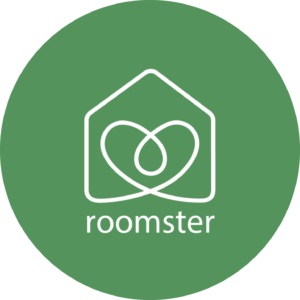Another way to reduce the table is by checking for invalid combinations; for example, there is no way someone can be a Male and a Female in a decision table. Multiple conditions can be coded for in similar manner to encapsulate the entire program logic in the form of an “executable” decision table or control table. There may be several such tables in practice, operating at different levels and often linked to each other .

That’s why you might want to automate decision table testing using some tools or techniques. In this article, you will learn about some of them and how to apply them in your software testing projects. A decision table is an excellent tool to use in both testing and requirements management. Essentially it is a structured exercise to formulate requirements when dealing with complex business rules. They can make it easy to see that all possible combinations of conditions have been considered and when conditions are missed, it is easy to see this.
Cruel Preeminence – severity and priority in software development
The table below shows the conditions and actions the company must take in different circumstances. Whenever there are any changes in the software, it is mandatory to incorporate the same in the decision tables. Therefore, you must maintain and update them frequently, which will result in more costs and efforts by the team. Every column of the above table consists of business logic and usually combinations of different circumstances. Additionally, you can see the actions related to those situations in the ‘Actions’ column.
Simply, https://www.globalcloudteam.com/ is a black box testing technique used to test multiple input combinations under different circumstances. It is a software testing approach to validate a system’s behavior for various combinations of input. In this approach, professionals record the input combinations and their corresponding system behavior, i.e., output, in a table, as you can see in the above examples of decision tables. In addition to tools, there are several techniques for automating decision table testing. Keyword-driven testing involves defining keywords and their parameters in a keyword table and combining them in a test case table.
How to use a decision table?
If there are no decision tables, testers can create them during test design to be able to write better test cases. While using the decision table technique, a tester determines the expected output, if the function produces expected output, then it is passed in testing, and if not then it is failed. Failed software is sent back to the development team to fix the defect. So, this was an example of building a decision table in software testing.
- After that, arrange the variables into columns and the test cases into rows, with the test case number in the first column and expected result in the last column.
- Additionally, utilized as a part of the model complex logic.
- That is to say, we create a Table in which the top rows are input conditions, and in the same vein, the bottom rows are resulting actions.
- If the testing team is looking for 100% coverage and the number of input combinations is low, Decision Table Testing is one of the most efficient ways of getting the job done.
- 5) Enter all possible combinations of values in the columns in the top right quadrant of the table.
- Such tables do not provide information about user experience or the overall quality of the software system.
A decision table is a black-box test technique that visually presents combinations of inputs and outputs, where inputs are conditions or cases, and outputs are actions or effects. A full decision table contains all combinations of conditions and actions. On the contrary, optimized one excludes impossible combinations of conditions and combinations of inputs that don’t have any effect on outputs. They can also be applied when the action of the software depends on many logical decisions. As you can see, this type of software testing is a structural representation hugely beneficial for complex business rules. Decision table testing can be a time-consuming and tedious process, especially for large or complex systems.
Advantages of Decision Table Testing
Write decision tables early, then they’ll become useful for requirements specialists, developers, end-users and testers. In complicated business rules, the structured approach helps understand the company’s requirements deeply. It is smarter to manage vast numbers of conditions by separating them into subsets and managing the subsets each one in turn. When you have distinguished the perspectives that should be combined, at that point you place them into a table posting every one of the combinations of true and false for every one of the angles.

A test driver or framework can be used to interpret and execute the keywords. Model-based testing utilizes models to represent the behavior and structure of the system, with a modeling tool or language creating decision tables as models. A test generator or framework can be used to generate and execute test cases from the models.
Explore Free Courses
When possible, phrase the conditions as questions that can be answered with a Y for yes and an N for a no. Here the Conditions to allow user to login are Enter Valid User Name and Enter Valid Password. And the actions performed are TRANSFER MONEY, SHOW A MESSAGE AS INSUFFICIENT AMOUNT, BLOCK THE TRANSACTION INCASE OF SUSPICIOUS TRANSACTION. https://www.globalcloudteam.com/glossary/decision-table/ Here the conditions to transfer money are ACCOUNT ALREADY APPROVED, OTP MATCHED, SUFFICIENT MONEY IN THE ACCOUNT. Simple to understand and everyone can use this method to design the test scenarios & test cases. This article covers the different Psychology of Testing and Testers and developers help to improve communication between them.

In many systems there are tons of business rules where decision tables add a lot of value. One advantage of using decision tables is that they make it possible to detect combinations of conditions that would otherwise not have been found and therefore not tested or developed. The requirements become much clearer and you often realize that some requirements are illogical, something that is hard to see when the requirements are only expressed in text. Capturing All Combinations and Actions – Firstly, it’s often challenging to ensure that we have got all the input combinations and actions captured.
Decision Table Testing: Practical Examples for Effective Test Coverage
That’s why I created testertips.com – to inspire and empower testers to take their careers to the next level. Whether you’re just starting out in the industry or looking to enhance your skills, I am here to guide you every step of the way. Let’s work together to achieve your goals and make your dreams a reality. If we are applying this technique thoroughly, we would have one test for each column or rule of our decision table.

Based on the inputs, the application will display real-time whether the loan will get approval, rejection, or requires a visit to the branch for further documentation and discussion. In addition to this, we won’t change it to reduce the complexity of this scenario. Such tables do not provide information about user experience or the overall quality of the software system.
Decision Table Testing
Currently, I am working with RABO Bank as a Chapter Lead QA. I am passionate about designing Automation Frameworks that follow OOPS concepts and Design patterns. The order of rule evaluation has no effect on the resulting action. Although the testing is efficient and beneficial, it can be a little time-consuming.
